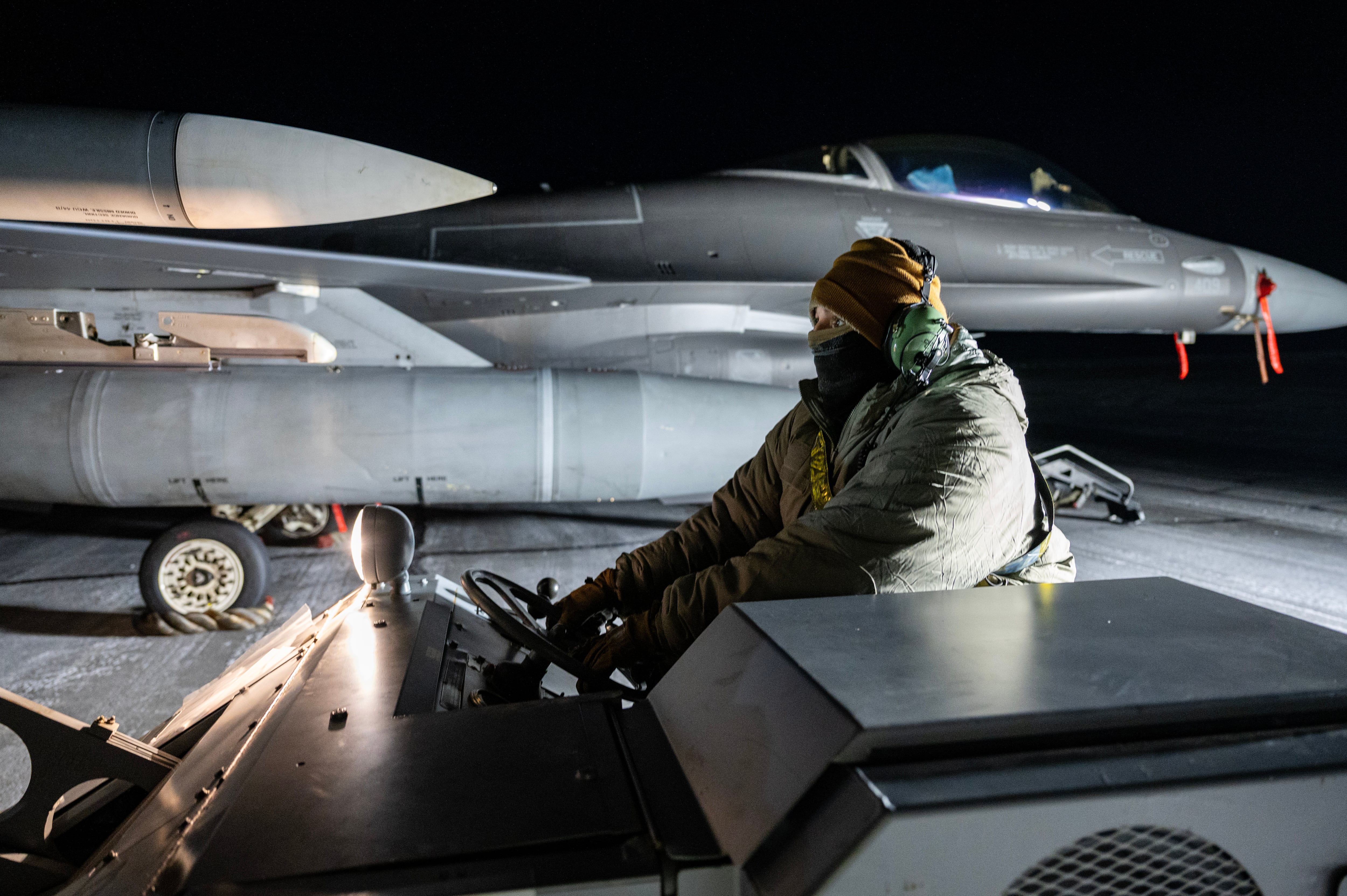Peter Mims was a troubled sailor who wanted out of the Navy.
He had financial problems, his marriage had fallen apart and his chain of command was riding him about qualifications. He’d sought mental health counseling, but was not treated when he needed it most.
Before he disappeared from the cruiser Shiloh on June 8, Mims was known for making crazy-yet-sincere claims. Shipmates recalled him saying he had been to space, and that he could shoot fireballs out of his hands.
After he went missing and sparked a massive, 5,500 square-mile man overboard search across the Philippine Sea, the ship’s crew continued a hopeful and fruitless search for him inside the claustrophobic catacombs of the ship’s engineering spaces.
A week after he disappeared — and after his family was notified of his presumed death — a search crew found him hiding in an escape passage leading out of a sweltering engine room.
He was covered in urine and feces, and had a camelback, a multi-tool, Peeps candy and an empty peanut butter jar with him.
Mims could have been apprehended prior to his discovery when another sailor spotted him in the middle of the night, days earlier. But that sailor just went back to sleep instead of sounding the alarm.
The details behind the curious case of Peter Mims involve a struggling sailor and a crew having to scour the dark, filthy parts of a ship where most shipmates never go.
They are contained in a Navy command investigation, witness statements and other documents obtained by Navy Times via a Freedom of Information Act request.
The records offer a look into why the Florida native hid, how he stayed hidden and the frantic efforts to find him.
Mims, a gas turbine systems technician who was frocked to a petty officer third class at the time of his disappearance, did not respond to Navy Times requests for comment.
Navy records show Mims later faced non-judicial punishment charges of abandoning watch and dereliction. His commanding officer ordered a reduction in rank and a suspended pay forfeiture sentence.
Navy records show that on Dec. 20, he reported to a transient personnel unit, and is slated for administrative separation.
While personnel records list him as a 3rd class, Navy officials said this week he will leave the service as an E-2.
Mims’s ability to stay out of sight was enhanced by his small stature and intimate knowledge of the engineering space that developed during his three years onboard Shiloh.
“GSM3 Mims is a very small person,” one sailor later wrote in a statement. “His small stature allowed him to more comfortably move around in the smaller engineering spaces than most others. He was also well-known within the Engineering Department for spending lots of time exploring the passages in those places.”
The Navy investigation found Mims had no assistance or support from other crew members during his disappearance.
The Shiloh’s chain of command, however, is admonished in the investigation for failing to realize Mims was having mental health problems.
He was not alone. Crew surveys obtained by Navy Times earlier this year depicted a crew suffering from overwork, depression and rock-bottom morale under then-skipper, Capt. Adam Aycock.
RELATED
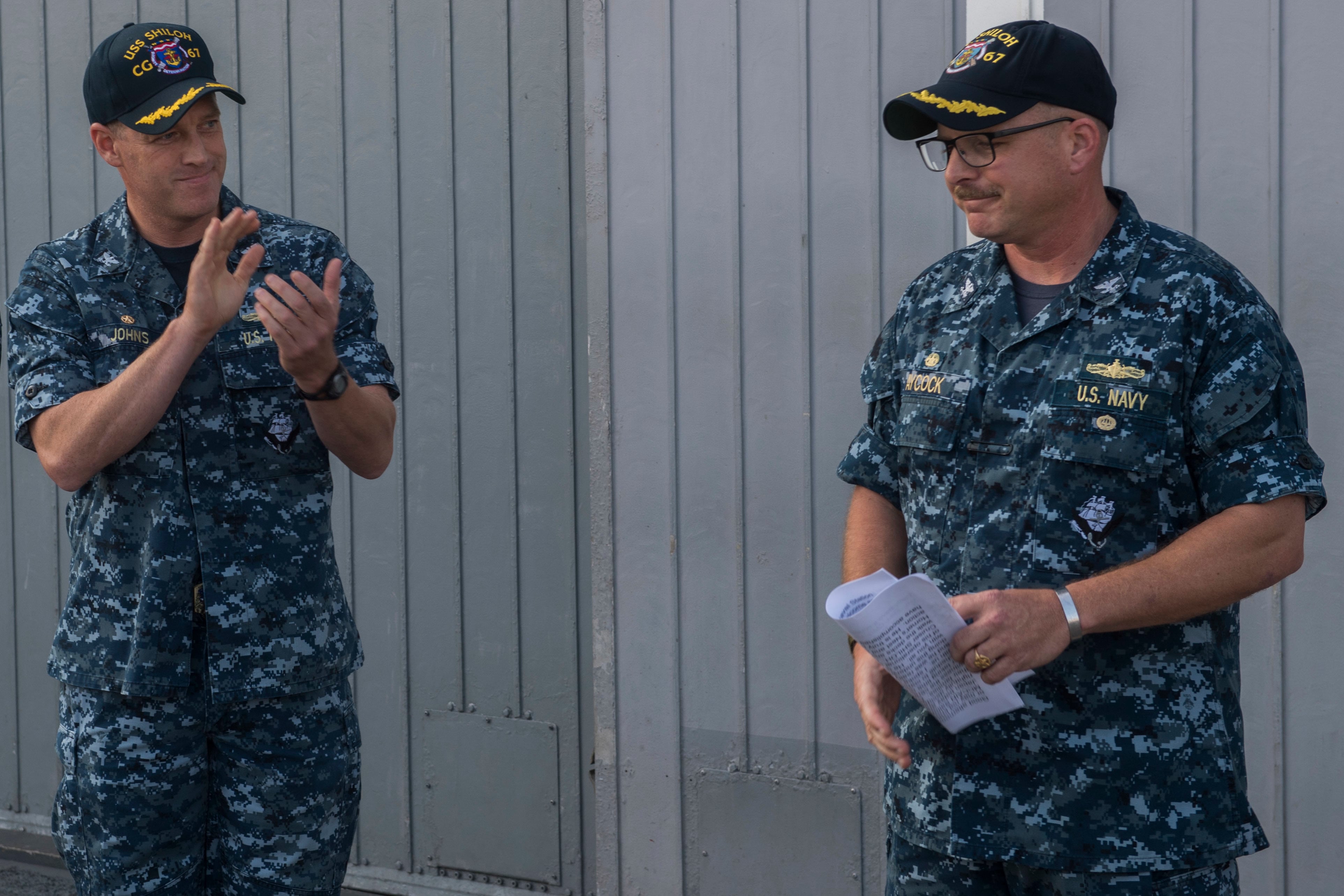
While Mims’s stresses were part family and part financial, the investigation notes that “significant and dynamic” pressure on sailors in the west Pacific’s 7th Fleet also played a part, issues that have been magnified in the wake of the destroyers Fitzgerald and John S. McCain collisions this summer that killed 17 sailors.
Shiloh sailors under Aycock reported in crew surveys that the ship’s tempo and command climate were brutal.
One sailor told investigators that the ship’s missions were multiplied once it shouldered tasks for the cruiser Antietam after it ran aground in January 2017.
Such a workload placed “a significant amount of stress” on the Shiloh sailors, according to the investigation.
Sailors in Mims’s engineering department reported “extreme work hours,” with one telling investigators they slept about three hours a night.
The Navy investigation revealed Aycock held off on calling man overboard when Mims went missing.
In the documents, Mims is portrayed as a troubled, yet occasionally capable sailor who dug manga and knew every nook and cranny of his Shiloh section, knowledge he would use to evade capture for days.
“Over the course of his three years on the ship, GSM3 Mims developed and refined his ability to hide and remain undetected, even directly taunting his shipmates who would look for him,” the investigation states.
He had gone missing during watch as recently as June 5, a few days before he went hiding.
“If you are looking for me and can’t find me, then you are looking too hard,” several of Mims’s peers recalled him saying.
The ‘outlandish claims’ of Peter Mims
Mims enlisted in 2014 and reported to the Shiloh later that year. Shipmates described him as small but strong, able to bench press twice his 150-pound body weight.
The command counseled him in 2015 for being late on qualifications. Yet that same year, he was listed as “must promote” in his annual evaluation.
“His enthusiasm and motivation are contagious!” a supervisor wrote on his eval. “A rock-solid performer with unlimited potential!”
But in 2016, he was busted by base security in Yokosuka, Japan, after drinking and falling asleep on a bench, which led to him being designated a liberty risk and prohibited from drinking alcohol, according to the investigation.
Mims filed for divorce later that year. He failed to report the divorce for months and was overpaid for housing as a result, leaving him indebted to the Navy for about $7,000, according to the investigation.
A friend told investigators that Mims was supporting his family and ex-wife, and that he only kept $40 to $60 from each paycheck for himself.
Despite financial and personal problems at home, Mims’s shipmates recalled a sailor who would take bragging to ridiculous heights.
“Mims was known for outlandish claims, such as he could stop running engineering department engines by pulsating electricity with his body, that he could shoot fireballs out of his hands, that he had a friend who had a motorcycle with the same engine as the ship, that he had been to space, and that before the Navy he was going to work for NASA because he had reached the pinnacle of how strong a human could be,” the investigation states.
“To those who heard it, it sounded like he believed his claims,” sailors recalled.
‘Anxious and timid’
Mims was acting strange the day before he burrowed into the confines of main engine room two. Shipmates reported him “looking anxious and timid” on June 7.
“GSM3 Mims had seemed ‘off’ the last couple of weeks, in a different way than during his divorce,” one Shiloh sailor told investigators.
Mims became increasingly paranoid and delusional, later telling investigators he believed “that people had been ordered to follow him and that they were observing him in berthing and around the ship.”
Mims showed another sailor how he had placed tape on his rack and vents of his locker to prevent anyone from sticking items in his area to “frame him,” according to the investigation.
RELATED
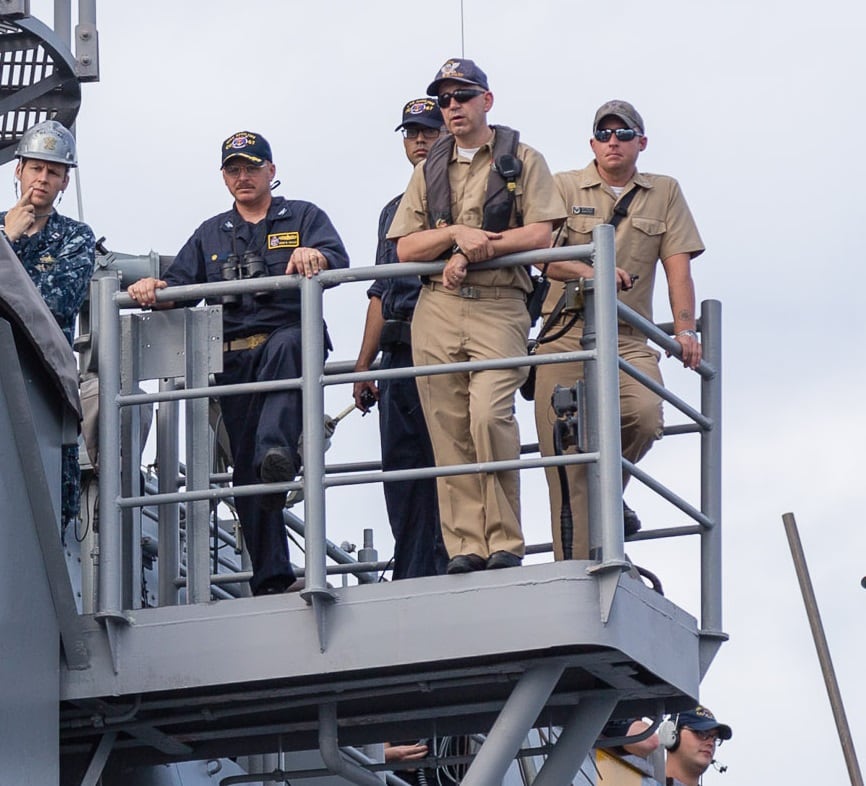
The day before he went missing, Mims met with his chain of command to discuss options for leaving the Navy early, then went and cleared out his workspace locker, telling shipmates he was spring cleaning.
“He said that he was ok, that he wasn’t going to harm himself or anyone else, wasn’t depressed, but that he had decided to get out of the Navy,” a sailor who spoke to him that day later said in a statement. “He said that there were some issues going on back home that had changed his mind about reenlistment.”
On the morning of his June 8 disappearance, he raided a snack station in the dining area of the ship. A crewmember watched Mims grab a bunch of Pop Tarts and granola bars, looking squirrelly all the while.
“Mims was retreating when he saw that I had seen him,” the crewmember later told investigators. “He returned when I stated, ‘I don’t care if you get a snack.’”
“I said, ‘you don’t have to steal. That’s why I put it out!’” the sailor said. “(Another sailor) laughed and said, ‘that’s weird.’”
That afternoon, Mims knocked on Aycock’s door and said he needed to call medical on the carrier Reagan, which was afloat nearby.
Mims made the call and then told the ship’s command master chief that he believed another sailor “had a poisoning scheme against him that involved injecting him with a needle,” the investigation states.
After Aycock joined them a short while later, Mims admitted the needle paranoia was not real and that “he was just trying to get attention,” according to the investigation.
Mims then said he wanted to leave the Navy to care for his mother, who had cancer.
Yet after he was found, “Mims specifically denied his mother had any chronic health concerns,” the investigation states.
Aycock and the command master chief, whose name was redacted from the report, thought Mims was tired “but not a danger to himself or others,” according to the investigation.
Mims appeared jumpy that afternoon, according to other sailors, but reported for his watch shift just before 6 p.m. After he failed to check in at about 8 p.m., the engineering officer on watch waited for about 30 minutes before logging Mims as missing.
That engineering officer recommended commanders initiate man overboard protocol for mustering purposes, which would spark a ship-wide head count without requiring the ship to maneuver.
The engineering officer relayed that recommendation up the chain of command, who in turn, relayed the man overboard recommendation to Aycock, who brushed it off, according to the investigation.
“The CO stated GSM3 Mims, ‘didn’t kill himself. He’s still on the ship,’” the investigation states.
“’Keep searching for him,’” Aycock said, according to the investigation.
The engineering officer reported the crew had walked through all engineering spaces just before 9 p.m.
The executive officer, whose name is redacted in the report, began preparation for search and rescue procedures a few minutes after that.
The engineering officer contacted the officer of the deck at about 9:06 p.m. and asked them to order Mims to report over the ship’s intercom. At about 9:15 p.m., the engineering officer contacted their superior again and “sounded like he was panicking,” according to the investigation.
The superior again went to Aycock’s office and recommended man overboard procedures.
Again, Aycock denied the request.
“He believed GSM3 Mims wanted to leave the Navy, but had assessed that GSM3 Mims had not presented as suicidal or shown any signs of self-harm,” according to the investigation.
The XO headed to the bridge and again recommended man overboard be initiated.
Aycock finally acquiesced at 9:24 p.m., and the Shiloh changed course and began steaming toward its location in the Philippine Sea when Mims first went missing.
At the same time, the crew reported that a 60-pound weighted workout vest was missing, which added to concerns that Mims had thrown himself overboard, according to the investigation. The vest was found a few weeks later.
A full-scale man overboard search was underway.
“Sailors were posted on the exterior of the ship with (night vision goggles) and spot light watches set up as it was believed (Mims) was not on the ship,” the command master chief later wrote in a statement to investigators.
Joining in the search were aircraft from the Reagan, the destroyers McCampbell and John S. McCain, as well as Japanese vessels.
By 1 a.m. on June 9, the Shiloh’s crew reported that all spaces had been searched and Aycock suspended the rescue effort at 2 a.m. to allow for crew rest, according to the investigation.
At this point, the investigation suggests no one thought Mims would not want to be found.
“Shipboard searchers reported that they were operating under the assumption they were searching for an injured or sleeping shipmate, not someone who was actively trying to evade them,” the investigation states.
The sea search for Mims was called off around midnight local time on June 11, and a casualty assistance officer notified his family.
But social media had relayed the news first.
“Mother and father were already aware that (search and rescue) operations called off via facebook (sic) post about 6 hours before official notification,” according to an email from the Shiloh’s XO. “Source of Facebook post unknown.”
‘He believed people were trying to kill him’
The next day, sailors found a bag of food in the trash room believed to have been preplaced by Mims, according to the investigation.
Records would later show Mims had snuck out while in hiding and used his Navy cash card to buy soda from a vending machine near the engine room’s main entrance before sinking back into the shadows.
The day after the search-and-rescue effort was halted, a sailor reported seeing him at about 4 a.m. on June 12, walking through a lounge area.
Mims was covered in rust and began filling a 34-gallon plastic bag with water. The sailor and Mims spoke for about 10 minutes, according to the investigation.
“Mims stated he believed people were trying to kill him, that he had not defecated since going into hiding,” the investigation reports.
Mims also told the sailor he believed there were hidden messages in the movie titles listed in the June 8 plan of the day, and that he expected the sailor to tell someone about their encounter.
“(The sailor) stated he was scared of (Mims) and that GSM3 Mims could physically beat him in a fight,” according to the summary.
Mims walked off, and the sailor went back to the berthing area to sleep for about 90 minutes. At about 6 a.m., the sailor woke and told the command about seeing Mims.
RELATED
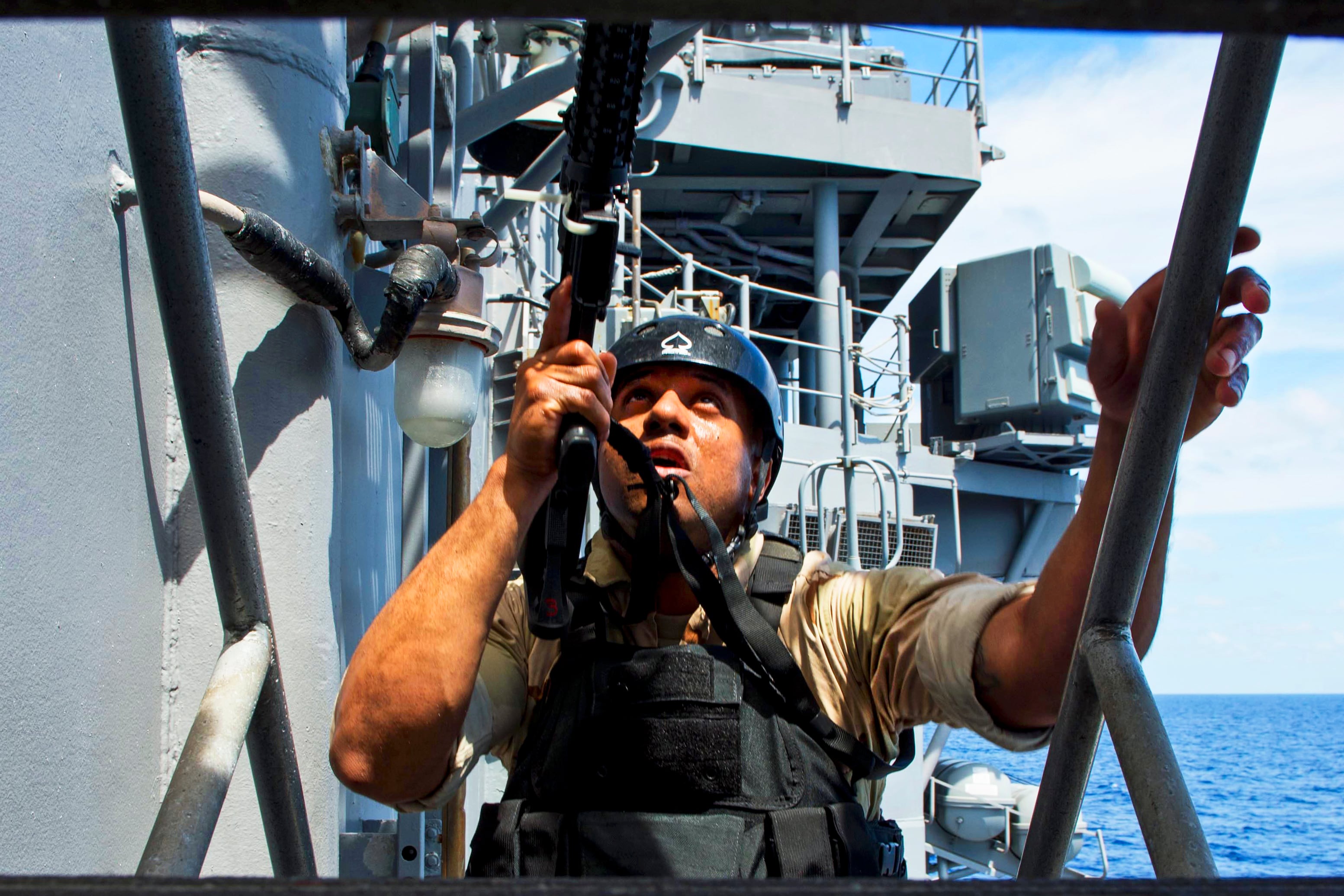
But that sailor was in the midst of being disciplined for an unrelated matter, which caused “credibility problems” with his account, according to the investigation.
The command master chief led another search of the Shiloh’s aft portions and found a urine bottle in an ammunition elevator near the trash room, according to the investigation.
The command master chief and several chiefs spent hours conducting another search for Mims, and did not inform the officers or seek their help, according to the investigation.
The chiefs searched the ship’s catacombs, a tight-fitting series of stiffeners and ribs beneath the engine modules, but they thought that area would be too hot to hide in for an extended time.
A team of sailors from the carrier Reagan arrived to help with the search and began surveillance of the trash room where Mims had been sighted.
After taps played on June 13, the command master chief led another search of the catacombs’ crawl spaces.
But only engine room one’s area was fully cleared, because a stench from engine room two was too overwhelming to search through.
“(Main engine room) 2 catacombs were not cleared because of overwhelming smells, assumed at the time to be fuel and oil, but later assessed to be urine and feces,” the investigation states.
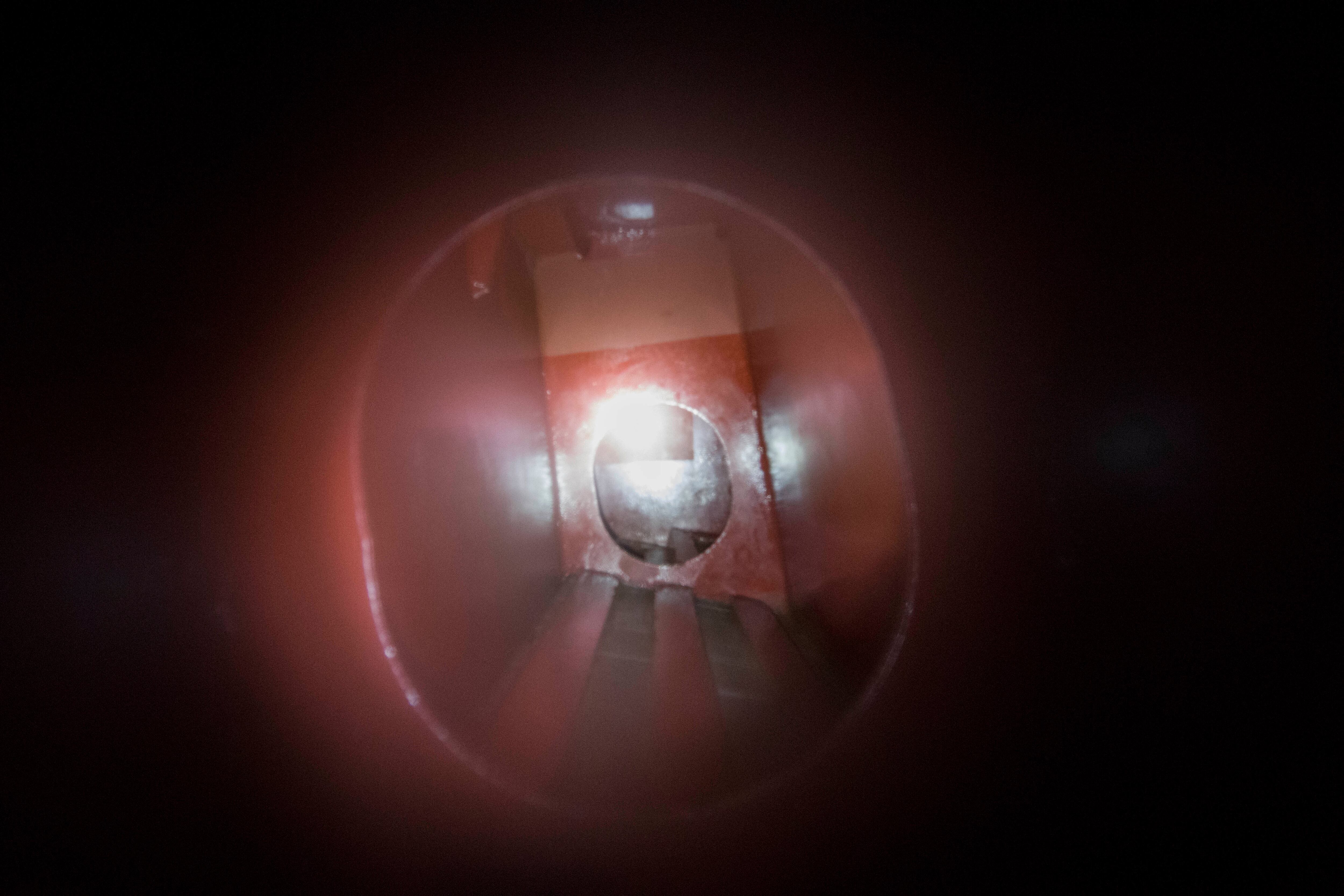
Mims is found
A few days before the hunt for Mims ended, “searching efforts calmed down,” one sailor wrote in a statement.
The Shiloh was heading to port.
“Everyone started to think if he was still on the ship he would try and leave in Singapore,” the sailor said.
An explosive ordnance disposal platoon from the Reagan flew to the Shiloh on the morning of June 15.
Aycock told them that portions of the engine room catacombs had been searched, but the entire area had not been cleared due to safety concerns.
“Based on the small size of the space and the unknown state of GSM3 Mims’ state of mind, fearing the safety of their personnel, they did not complete the catacomb search, which requires crawling through a series of small compartments,” the investigation states.
The EOD sailors were warned that Mims could be a threat.
“Though GSM3 Mims is small he is strong,” they were told.
The EOD team suggested manning all entrance and exit points to the engine rooms, and not approaching Mims until they could verify he was not a threat.
Aycock got on the ship’s intercom at about 1 p.m. to explain the new search plan.
“He started talking to Mims like he knew he was listening,” a sailor said in a statement.
The EOD team, armed with batons and flexicuffs, began the renewed search.
Sailors in engine room two’s catacombs reported finding an aviator’s bag kit, a trash bag, sweatpants, a headphone charger and soda cans.
“Both also reported a strong smell of urine and feces,” the investigation states.
“It was very hot and extremely tight as well as red sludge was everywhere,” a chief later wrote in a statement.
At about 2 p.m. on June 15, a sailor opened an exit passage from engine room two and felt resistance. The sailor saw Mims and thought he was dead, according to a statement.
“That is when I bumped him with the door again,” according to the sailor, whose name is redacted in the report.
“This is when he woke up.”
The shocked sailor backed away and left the area, letting Mims out of his sight.
The sailor sat for a few minutes, collected himself and then went back.
The escape passage area where Mims was found was “noticeably cooler” than the engine room proper, according to the investigation.
Mims and the sailor who found him had a “substantive conversation.”
“What’s with all the noises in Main two?” Mims asked.
“Everybody’s been looking for you for a week,” the sailor recalled answering.
Mims told the sailor he hid because Aycock and the command master chief wouldn’t allow him to leave the ship.
The sailor persuaded Mims to turn himself in, then told Mims “to stay put” while he notified a supervisor.
“This is the second, and final, of two times GSM3 Mims is left alone after being identified by (the sailor),” the investigation states.

‘Soaked in urine and feces’
After he was found, Mims was taken to the chief’s “chill room,” where he declined food and water but took a shower and changed his clothes, according to the report.
His coveralls were “heavily soaked in urine and feces,” according to the command master chief’s statement.
Mims was escorted to Aycock’s cabin, where he drank soda and ate cereal.
The command master chief told him he could call his family, but Mims declined.
Commanders wanted Mims to be flown to the carrier Reagan that day, but “mechanical issues with the transferring helicopter” scrapped those plans.
The Shiloh moored in Singapore the next day, June 16, and a handcuffed Mims was taken off the ship for transfer to the Reagan.
Mims did not plan on being found, nor did he have a plan for whether he would eventually reveal himself or try to escape from the ship in Singapore, according to the investigation.
Mims told investigators he believed his computer access was being monitored and that his family was in danger because he had told a shipmate where they live.
About a week later, a former electrician’s mate studied how Mims had managed to stay hidden from his shipmates.
Foot traffic coming toward engine room two could be heard ahead of time, which would have allowed Mims to hide before he was spotted.
The area was full of dark areas where he could hide undetected from passing sailors, and a nearby escape trunk led to the outside.
“The hallways are very dark and would lend themselves easily to someone who wanted to remain hidden,” the investigator remarked. “After taps foot traffic was very light and the only personnel who transited the engineering spaces were watchstanders who were focused on taking logs.”
“Given GSM3 Mims’ knowledge of the spaces,” the investigation found, “it is highly likely he could have easily evaded the ship’s force search efforts.”
‘A Model Petty Officer’
Mims later told investigators he went into hiding because “he was concerned for his own safety,” according to an interview summary.
“As evidence of what GSM3 Mims believed to be a threat to his safety, he recommended the (crew) surveys be looked at,” the summary states. “Mims seemed paranoid and appeared to be holding back some information.”
Most of the investigation’s recommendations were redacted in the copy provided to Navy Times.
But it faults Shiloh’s leadership for failing to spot Mims’s warning signs.
“The SHILOH chain of command did not aggressively intervene to correct these deficiencies,” the investigation found.
“GSM3 Mims is a below average sailor who tended to be unreliable and untruthful outside of basic duties,” the investigation states.
Aycock, the command master chief and other leaders all interacted with Mims in the days before his disappearance, a time when Mims showed “clear instability,” according to the investigation.
These interactions should have led leadership “to adequately assess (Mims) was not fit for full duty on board SHILOH,” the investigation found.
It also faults Aycock’s subordinates for failing to push back when the skipper was slow to call man overboard.
“The CO exercised absolute authority of SHILOH’s initiation of (man overboard) procedures, and was not relieved from such responsibility by any competent authority,” according to the investigation.
The fact that senior enlisted leaders led a search for Mims at one point without notifying the wardroom also hampered the effort, the investigation found.
While Mims claimed that his superiors were out to get him, the investigation found that neither his peers nor leadership believe he was bullied.
On June 14, a few days before he was found, a superior signed off on his most recent evaluation, which lauded him as “a Model Petty Officer that consistently leads by example seeking greater responsibility.”
“GSM3 Mims’s stellar performance has proven his high regards for mission success through teamwork and training,” his superior wrote. “He earned my utmost trust and confidence!”
The investigation into his disappearance adds that it also listed him as “Must Promote.”
“This evaluation was not provided to GSM3 Mims due to his unauthorized absence at the time,” according to the investigation.
Geoff is the managing editor of Military Times, but he still loves writing stories. He covered Iraq and Afghanistan extensively and was a reporter at the Chicago Tribune. He welcomes any and all kinds of tips at geoffz@militarytimes.com.



